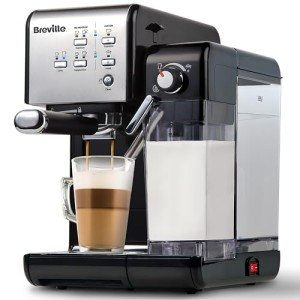Its History Of Home Espresso Machines

The Rise of Home Espresso Machines: A Comprehensive Guide
As coffee fans continue to seek fresh and tasty brews in the house, the appeal of home espresso machines has actually surged in current years. No longer just the domain of coffee shops and cafe, these machines empower people to craft barista-quality espresso drinks from the convenience of their kitchen areas. This short article will check out the different kinds of home espresso machines, their functions, and considerations for choosing the right one. Additionally, it will supply a choice of FAQs to help prospective purchasers make informed choices.
Kinds Of Home Espresso Machines
Home espresso machines can be classified into numerous classifications based on their systems and user-friendliness. Each type has its unique features, pros, and cons.
| Type | Description | Pros | Cons |
|---|---|---|---|
| Manual Espresso Machines | Requires the user to manually manage the developing procedure, including strategies like pulling a lever to create pressure. | - Complete control over developing procedure - Compact design | - Requires ability and practice - Time-consuming |
| Semi-Automatic Machines | Machine automates water circulation and pressure, however the user still controls the dosing and period of the developing procedure. | - Balance of automation and control - Versatile | - Learning curve for improving methods |
| Fully Automatic Machines | Automates the entire brewing process, from grinding to brewing, frequently with programmable settings for customized drinks. | - Extremely user-friendly - Quick and convenient | - Less control over the brewing procedure - Higher rate point |
| Capsule or Pod Machines | Uses pre-packaged espresso pills or pods to develop coffee rapidly and quickly. | - Extremely easy to use - Minimal clean-up | - Limited taste variety - More pricey per cup than ground coffee |
| Super-Automatic Machines | Integrates features of completely automatic machines with integrated mills, enabling users to brew whole bean espresso and milk-based beverages with one touch. | - All-in-one benefit - Ideal for milk-based drinks | - Often the most pricey - Can be bulky |
Functions to Consider
When choosing a home espresso machine, prospective buyers must think about the following features to ensure they choose a machine that fulfills their needs:
Grinder Type:
- Built-in mills can offer fresher grounds however might require more upkeep.
- Different grinders enable more personalization of grind size.
Pressure:
- Look for machines that produce at least nine bars of pressure, which is optimal for developing espresso.
Water Temperature Control:
- Machines with adjustable temperature settings enable better extraction of taste from beans.
Milk Frothing Options:
- Consider whether you desire a manual steam wand for frothing or an automatic milk frother for convenience.
Alleviate of Cleaning:
- Machines with removable parts and self-cleaning functions substantially reduce cleanup time.
Size and Design:
- Ensure the machine fits conveniently in your cooking area and aligns with your aesthetic preferences.
Budget:
- Set a budget before starting your search, as rates can vary substantially from affordable models to high-end machines.
Benefits of Home Espresso Machines
Owning a home espresso machine provides numerous benefits:
- Cost-Effective: Over time, developing espresso in the house can save coffee enthusiasts cash compared to regular café check outs.
- Customization: Users can experiment with various beans, grind sizes, and brewing techniques to find their best cup.
- Convenience: The capability to brew espresso any time removes the requirement to go out to a café, specifically advantageous during late nights or mornings.
- Quality Control: With a home machine, people have complete control over the quality of components and brewing procedures.
Drawbacks of Home Espresso Machines
Nevertheless, there are some drawbacks to think about:
- Initial Investment: High-quality espresso machines can be pricey, needing a significant in advance financial investment.
- Knowing Curve: Mastering the art of espresso developing can take some time and practice, which may be intimidating for novices.
- Maintenance: Like any appliance, espresso machines need routine cleansing and maintenance to ensure optimal performance.
FAQs
1. What is the best kind of home espresso machine for beginners?
Answer: For novices, a semi-automatic machine is often advised as it uses a balance in between control and automation, permitting you to discover the basics without frustrating intricacy.
2. How much should I invest on a home espresso machine?
Answer: Entry-level machines can start around ₤ 100 to ₤ 300, while higher-end designs can vary from ₤ 500 to over ₤ 2000. It's vital to set a budget based on your anticipated use and desired features.
3. Do I need a separate grinder?
Response: While some espresso machines come with built-in grinders, buying a different grinder enables greater personalization and makes sure better quality grounds.
4. How often should I clean my espresso machine?
Answer: Cleaning frequency can vary by machine type, but it's usually advised to clean the machine after each use and carry out deep cleanings weekly or monthly, depending on use.
5. Can I make milk-based beverages with any espresso machine?
Response: Not all machines feature milk frothing capabilities. If you enjoy beverages like lattes or cappuccinos, search for a machine with a steam wand or automatic frother.
Home espresso machines are changing the way coffee fanatics enjoy their precious brews. With click the next internet page and advanced functions available in the market, there is something for everyone. Whether it's the pleasure of creating special recipes or simply relishing the ideal shot of espresso, investing in a home espresso machine can improve both the coffee-drinking experience and the lifestyle for coffee lovers all over. Just like any financial investment, it is vital to weigh the benefits against the possible drawbacks and choose a machine that seamlessly fits both your way of life and preferences.

